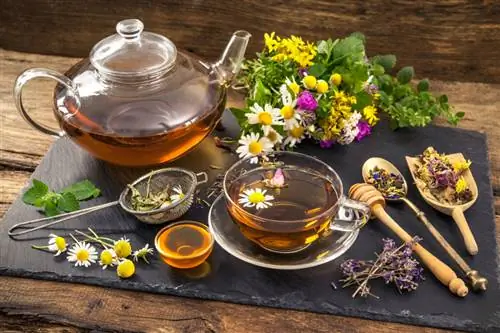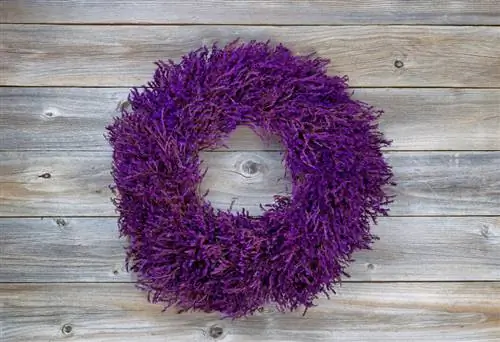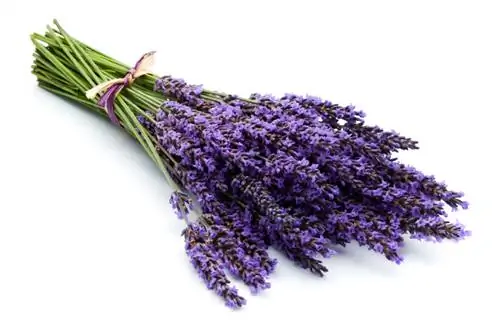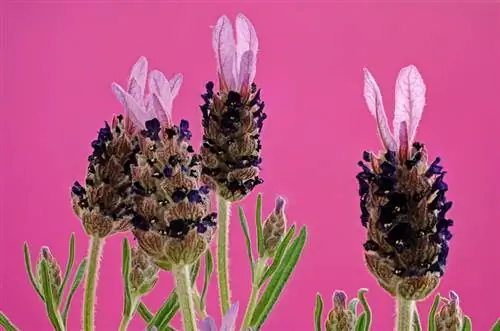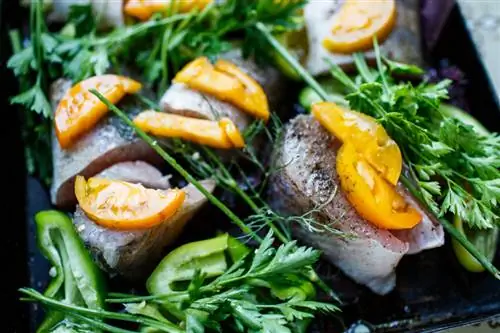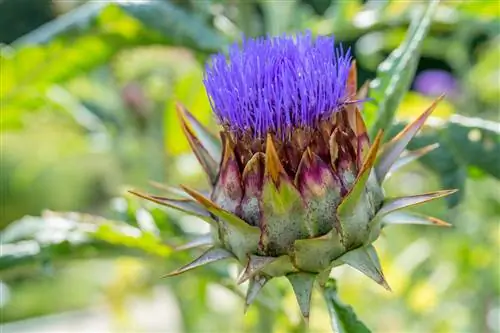- Author admin [email protected].
- Public 2023-12-16 16:46.
- Last modified 2025-01-23 11:20.
Most people are probably familiar with lavender as an ingredient in scented sachets to combat moths or as the dominant note in a perfume - for example, cologne, created at the beginning of the 18th century, is famous and has an intense scent of lavender. However, it is little known that lavender can also be used as a spice in the kitchen.
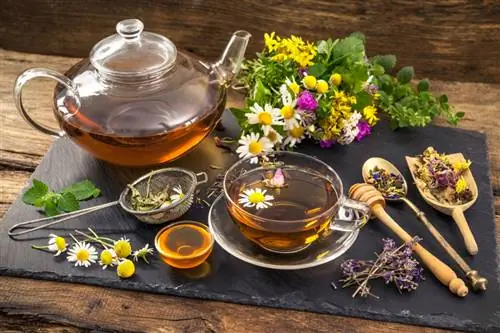
How to use lavender in the kitchen?
Lavender in the kitchen is a suitable spice with a slightly bitter aroma, similar to rosemary. It is best to use Lavandula angustifolia (real lavender) and dose sparingly, especially with dried plant parts. Experiment with lavender in savory and sweet dishes.
Unusual aroma for those who like to experiment
Due to the intense, floral scent, you would expect lavender to have a rather sweet taste. The opposite is the case: lavender has a slightly bitter aroma similar to rosemary. If you want to experiment with lavender, you can first try making classic rosemary dishes with lavender instead. However, lavender doesn't always taste the same: depending on which variety it is and whether the plant components used are fresh or dried, the taste changes.
Which type of lavender should you use?
The varieties of Lavandula angustifolia, the real lavender, are best suited for cooking. Compared to lavender, for example, this is much milder and slightly sweeter in taste. Many people have had bad experiences with lavender when cooking because it contains a high proportion of saponins and therefore quickly becomes soapy. Nevertheless, lavender can also be used as a spice in the kitchen, but you should use it as fresh and as sparingly as possible. Wool lavender, on the other hand, is primarily used in sweet dishes.
Dried or fresh?
Both the leaves and flowers can be used dried or fresh. However, spiced lavender becomes more intense in taste as soon as it is dried - which is why you should use dried plant ingredients even more sparingly than fresh ones. If possible, only use the very young leaves for cooking - the older they are, the soapier they become. The dried flowers can be used for garnishing, but also for flavoring sugar, s alt, vinegar or oil.
The right dosage matters
Lavender, especially when dried, should be used very sparingly. Its intense aroma tends to quickly dominate the entire dish. That's why it's better to try it out slowly and see how you and your family like it best. Lavender is a very unusual spice that should first be tested in all its possibilities.
Tips & Tricks
Lavender essential oil can also be used for cooking. Dilute the lavender oil with, for example, olive oil (a few drops are enough) and add it late - otherwise the volatile aroma will evaporate.

